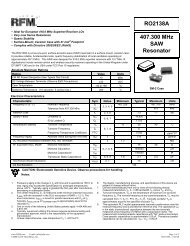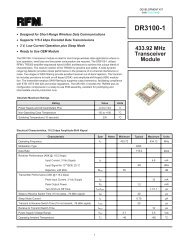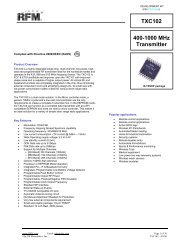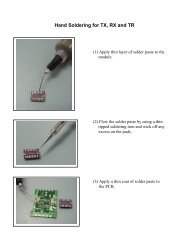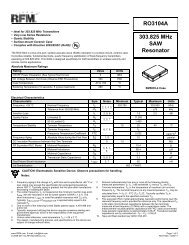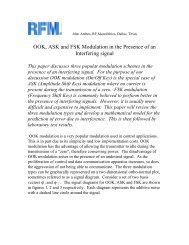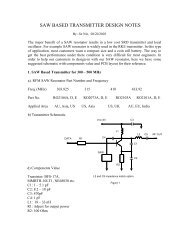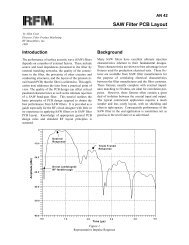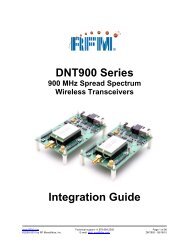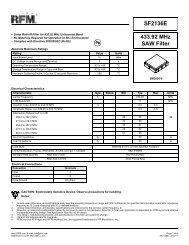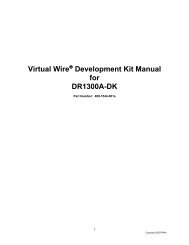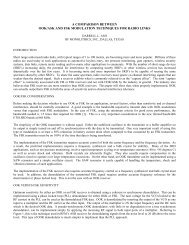TRC101 300-1000 MHz Transceiver - RF Monolithics, Inc.
TRC101 300-1000 MHz Transceiver - RF Monolithics, Inc.
TRC101 300-1000 MHz Transceiver - RF Monolithics, Inc.
Create successful ePaper yourself
Turn your PDF publications into a flip-book with our unique Google optimized e-Paper software.
Receiver Control Register (continued)Bit [7..5] – Receiver Baseband Bandwidth: These bits set the baseband bandwidth of the demodulateddata. The bandwidth can accommodate different FSK deviations and data rates. See Table 12 forbandwidth configuration.Table 12.Baseband BW (kHz) BB2 BB1 BB0Resvd 0 0 0400 0 0 1340 0 1 0270 0 1 1200 1 0 0134 1 0 167 1 1 0Reserved 1 1 1Bit [4..3] – Receiver LNA Gain: These bits set the receiver LNA gain, which can be changed toaccommodate environments with high interferers. The LNA gain also affects the true RSSI value. Referto Bit [2..0] for RSSI. See Table 13 below for gain configuration.Table 13.LNA GAIN (dB) GAIN1 GAIN00 0 0-6 0 1-14 1 0-20 1 1Bit [2..0] – Digital RSSI Threshold: The digital receive signal strength indicator threshold may be set toindicate that the incoming signal strength is above a preset limit. The result is stored in bit 7 of the statusregister. There are eight (8) predefined thresholds that can be set. See Table 14 below for settings.Table 14.RSSI Thresh RSSI2 RSSI1 RSSI0-103 0 0 0-97 0 0 1-91 0 1 0-85 0 1 1-79 1 0 0-73 1 0 1Resvd 1 1 0Resvd 1 1 1The RSSI threshold is affected by the LNA gain set value. Calculate the true RSSI set threshold whenthe LNA gain is set to a value other than 0 dB as:RSSI = RSSIthres + |GainLNA|www.<strong>RF</strong>M.com Email: info@rfm.com Page 23 of 42©by <strong>RF</strong> <strong>Monolithics</strong>, <strong>Inc</strong>. <strong>TRC101</strong> - 4/8/08



